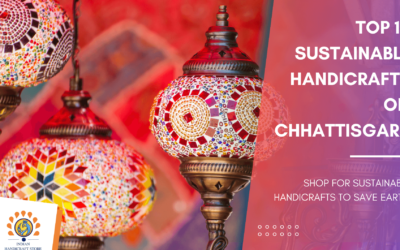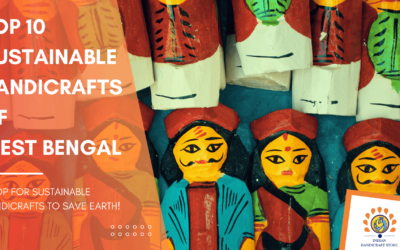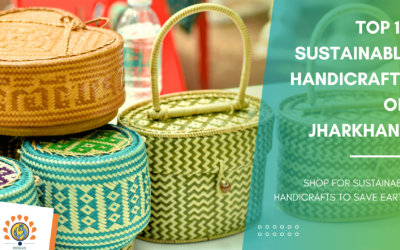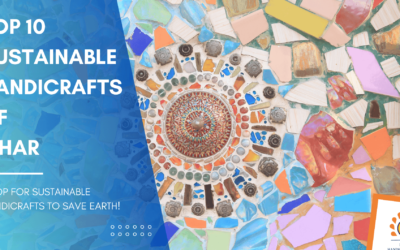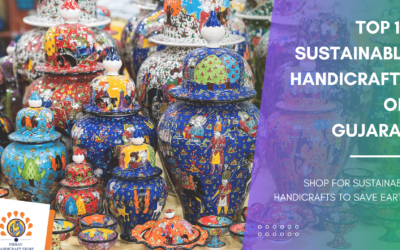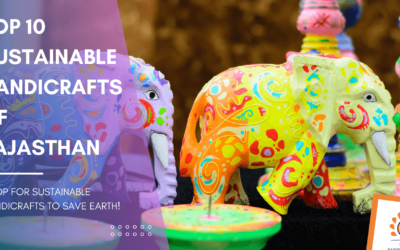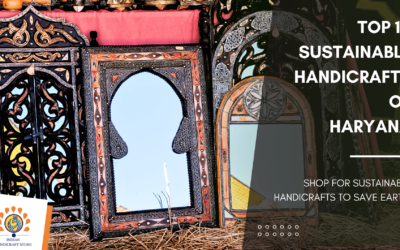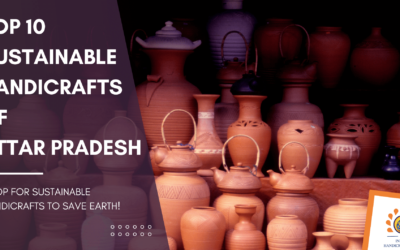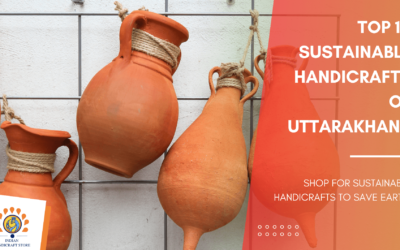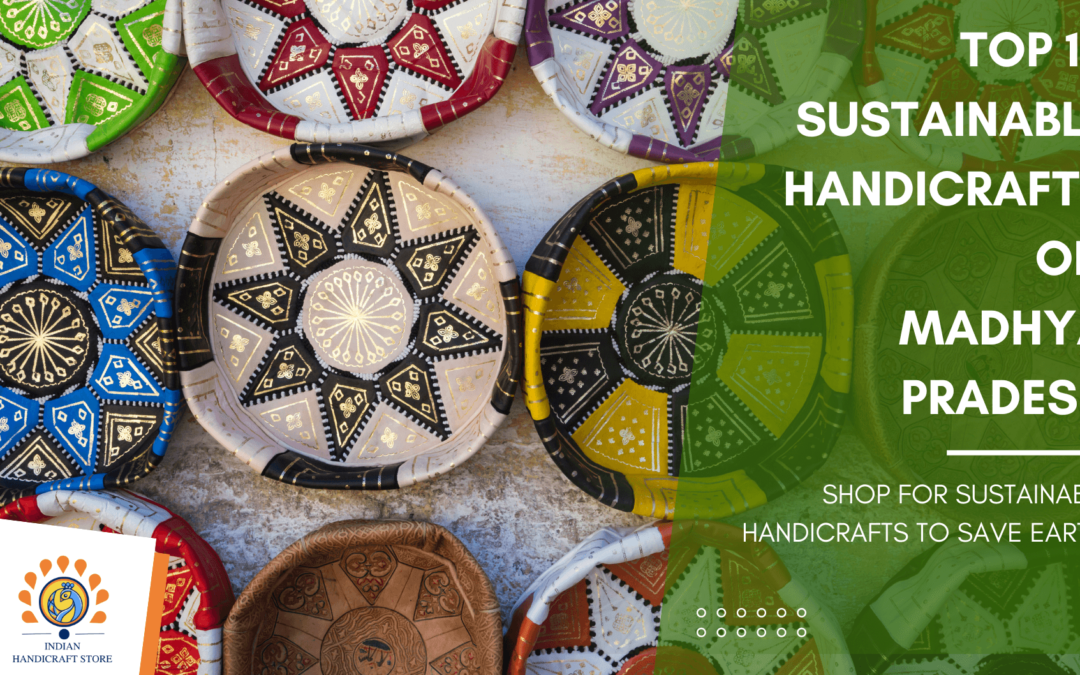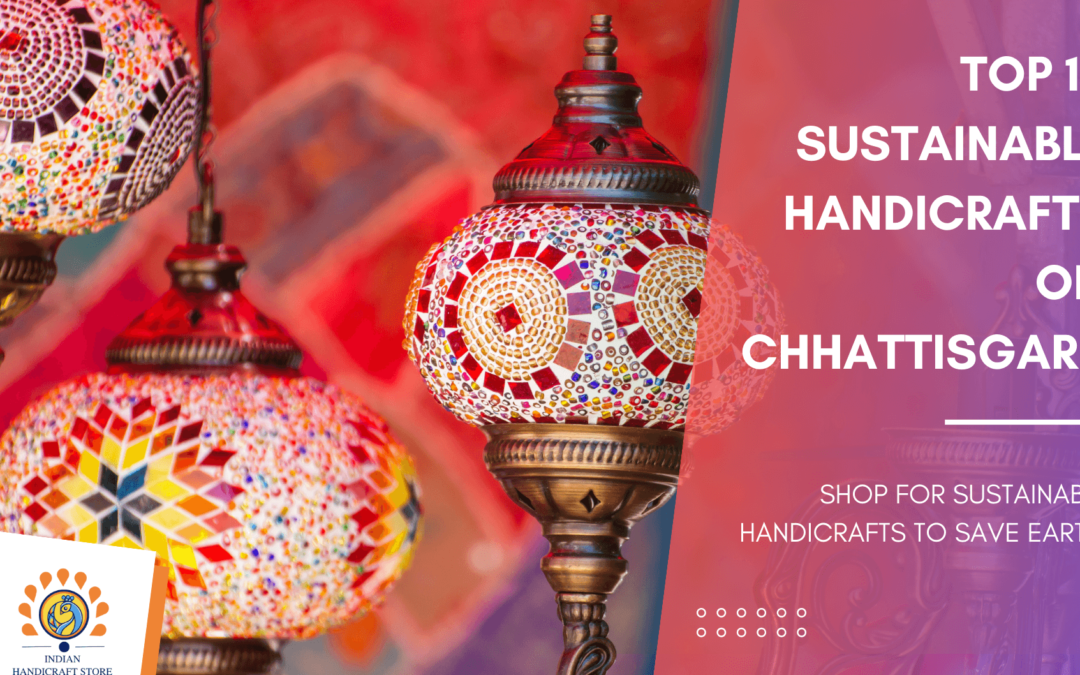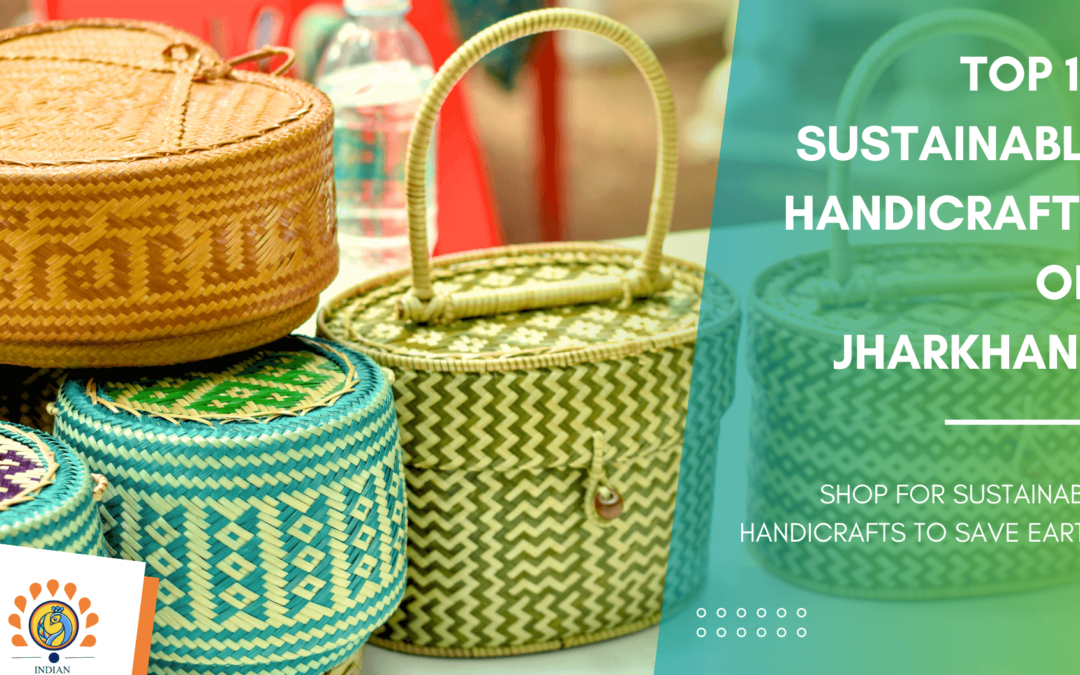Chhattisgarh is a...

Top 10 Sustainable Handicrafts of Maharashtra
Maharashtra is a state in India that boasts a rich culture and heritage. The state is known for its vibrant and diverse handicrafts, which reflect the cultural diversity of the region. The state is home to a diverse range of artisans who produce a wide range of sustainable handicrafts. Maharashtra is a state rich in culture and heritage, and its handicrafts reflect the same.
Here are the top 10 sustainable handicrafts of Maharashtra:
Paithani: Paithani is a type of saree made from fine silk and adorned with intricate motifs. It is a traditional Maharashtrian garment and is famous for its richness and elegance.
Warli Art: Warli art is a tribal art form from Maharashtra, known for its simple and minimalistic style. It features stick-like figures, geometric shapes, and patterns, depicting scenes from everyday life.
Kolhapuri Chappals: Kolhapuri chappals are handmade leather sandals that originated in Kolhapur. They are known for their durability, comfort, and unique style.
Bidriware: Bidriware is a metal handicraft that originated in Bidar, but is now produced in parts of Maharashtra. It involves the use of zinc, copper, and tin to create exquisite designs on metal objects like vases, plates, and boxes.
Bamboo craft: Maharashtra is home to various tribal communities who are experts in bamboo craft. They create baskets, mats, hats, and other items using this eco-friendly material.
Nashik Petha: Nashik petha is a sweet delicacy made from winter melons, sugar, and saffron. It is a famous sweet from Nashik and is known for its unique taste.
Ganjifa Cards: Ganjifa is a traditional Indian card game that originated in Maharashtra. The cards used in this game are made from wood or palm leaves and are decorated with intricate designs and motifs.
Kosa Silk: Kosa silk is a type of silk produced in the regions of Nagpur and Chhattisgarh. It is known for its softness, durability, and luxurious texture.
Papier-mâché: Papier-mâché is a popular handicraft in Maharashtra, with origins in the Kashmir valley. It involves creating objects by molding paper pulp, and then decorating them with paint and varnish.
Pattachitra: Pattachitra is a style of painting that originated in Odisha but is also practiced in parts of Maharashtra. It involves painting intricate designs and motifs on a piece of cloth, using natural dyes and colors.
Maharashtra is a hub of sustainable handicrafts, ranging from textiles to metal crafts to food items. These handicrafts not only reflect the state’s rich culture and heritage but also provide employment opportunities for thousands of skilled artisans. It is essential to support these sustainable handicrafts to ensure their survival and to preserve the unique art forms for generations to come.
Our Blogs
Top 10 Sustainable Handicrafts of Chhattisgarh
Top 10 Sustainable Handicrafts of West Bengal
West Bengal, the...
Top 10 Sustainable Handicrafts of Jharkhand
Jharkhand, a state...
Top 10 Sustainable Handicrafts of Bihar
Bihar, a state...
Top 10 Sustainable Handicrafts of Gujarat
Gujarat, a state...
Top 10 Sustainable Handicrafts of Rajasthan
Rajasthan, the...
Top 10 Sustainable Handicrafts of Haryana
Haryana is a state...
Top 10 Sustainable Handicrafts of Uttar Pradesh
Uttar Pradesh is a...
Top 10 Sustainable Handicrafts of Uttarakhand
Uttarakhand, a...


